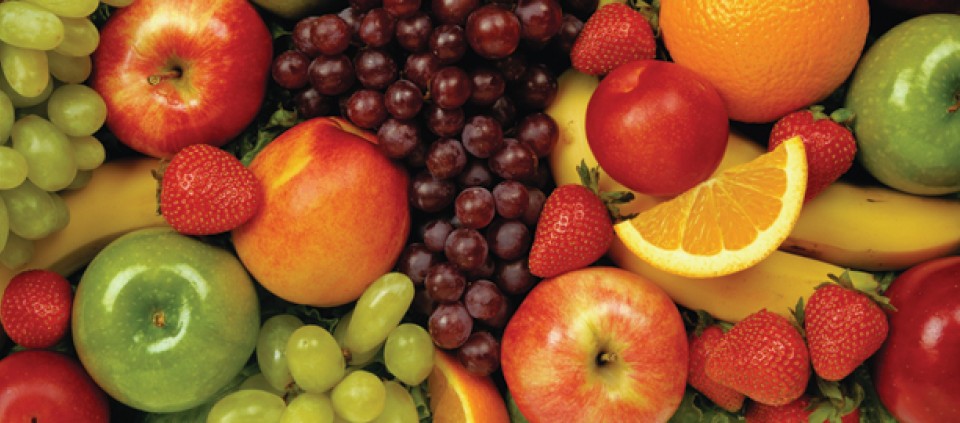A Fruit Bowl Full of Happiness

Seven servings a day chase the blahs away—really!
Seems obvious: Who doesn’t get at least a little bit excited by a heaping bowl of fresh-cut fruit (especially if someone else has done the cutting for us)? But now science confirms that happiness and mental health rise with the number of servings of fruits and vegetables we eat each day.
Researchers at the University of Warwick and Dartmouth College studied 80,000 people living in the United Kingdom, and compared their fruit and veggie intake with their life satisfaction, mental well-being, presence of mental disorders, self-reported health, happiness, nervousness, and how often they "feel low,” factoring in such variables as the rest of their diets, alcohol, and many demographic, social, and economic factors. In an overwhelming number of cases, people who ate the World Health Organization-recommended five servings per day were happier than those who didn’t, and those who ate seven per day were happiest.
Some of this can be explained by looking at what these fruits and veggies are replacing—namely foods that can have a negative effect on our mood and outlook, like sugar and refined carbs. But it’s not just what fruits and veggies are not. Fruits and veggies are the richest sources of potassium and magnesium, both of which have anti-depressant effects. They are also, as a whole, anti-inflammatory, which can lead to better neurological health.
Of course, in addition to being a sometime mood-killer, winter can be a more difficult season for getting enough fruits and veggies in our diets. There are fewer local options; our days our shorter. Here are some tips for getting your "fruit dosage” this winter:
Plan ahead. Try turning the surplus from your summer or fall harvests into kimchi or sauerkraut. The process is simple, and requires only vegetables (any type, though favorites are cabbage, kale, collard greens, Brussels sprouts, and mustard greens), water, and salt. In as few as four days, you can have deliciously preserved vegetables without losing any of their nutritional value. In fact, some research suggests that nutritional value may actually be improved through fermentation, especially in the case of fermented greens.
Replace grains with veggies. Starch from fruits and vegetables like squash and sweet potatoes will pack a higher nutritional punch than that from grains and cereals. Grains, even whole ones, typically drive inflammation, are almost always a metabolic acid load, and are basically a filler at best. Starchy vegetables, despite their sometimes-higher glycemic index, are not associated with a greater risk of diabetes or weight gain, unlike grains and flour.
Get creative. Use more fruits and vegetables in less conventional ways. For instance, mix pumpkin or squash with cinnamon and ginger, bake until tender and sweet, and top with coconut milk. Or bake apples with cinnamon for a healthy, sweet dessert.
© Kripalu Center for Yoga & Health. All rights reserved. To request permission to reprint, please e-mail editor@kripalu.org.